Species factsheet
Sumatran elephant is one of the four Asian elephant subspecies. It is found only on the island of Sumatra, Indonesia.
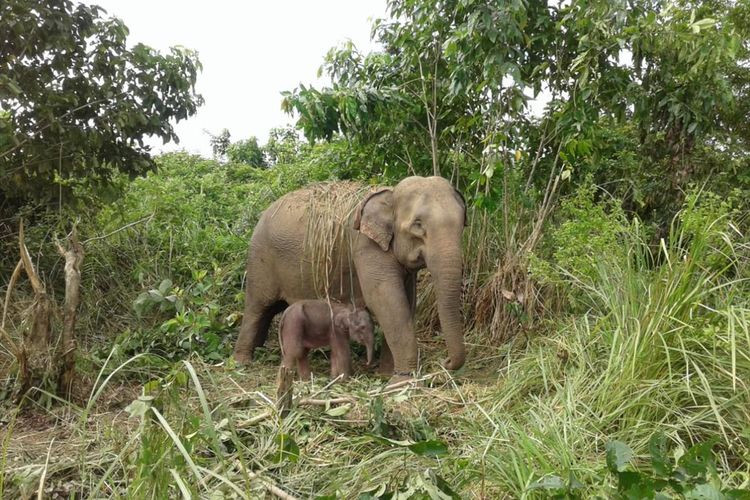
The other subspecies are the Sri Lankan elephant (found in Sri Lanka) and the Indian elephant (found from India to Malaysia).
The last subspecies is the Borneo elephant (recent DNA analysis confirmed that it was genetically distinct from other subspecies). Only one pocket of Borneo elephants is known in Indonesia in Nunukan Regency, North Kalimantan. Most of the population is found in the northern Malaysian part of the island.
Biologists have identified 3 other extinct subspecies of the Asian elephant. Among them was the Javan elephant, native of Java island, that has gone extinct in the 18th century.
Sumatran elephant are protected under Indonesian law since 1931 (Ordunansi Perlindungan Binatang Liar 1931).
Characteristics
Their weight varies between 2,25 and 5,5 tons. They can grow up to 3 meters high. Compared to their Asian cousins, Sumatran elephants have smaller bodies, larger ears and longer tusks.
Only male elephants grow tusks.
Female and young elephants form herds of up to 25 individuals that are led by a matriarch. Male live solitary even though occurrence of small male herds have already been observed.
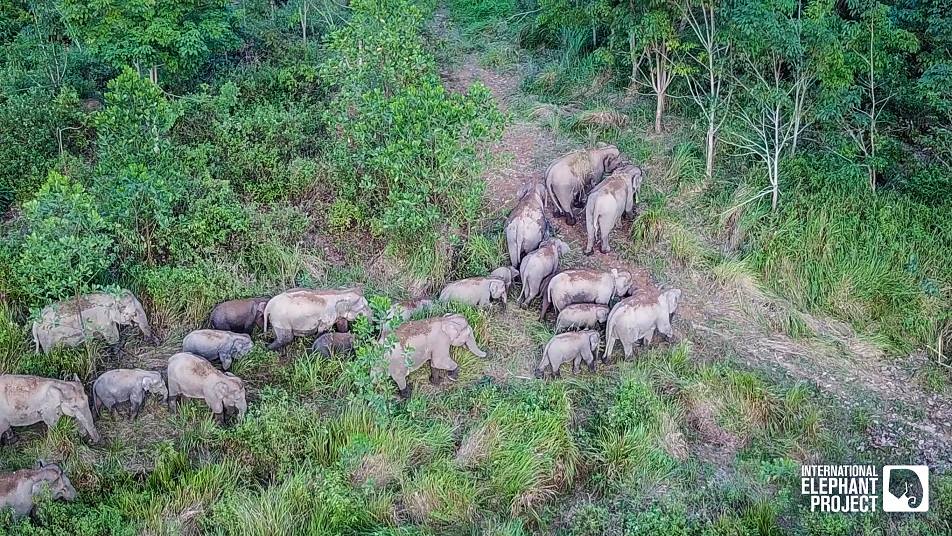
Sumatran elephants feed on roots, grasses, fruit and bark. An adult elephant can eat up to 130kg of food per day.
Elephants can breed from 10-12 years old. Pregnancy takes between 18 and 23 months. Female usually reproduce once every 4 years.
In the wild, Sumatran elephants can expect to live up to 60 years.
Habitat
The prime habitat of the Sumatran elephant is the lowland forests of Sumatra.
Sumatran elephants are constantly moving. Surprisingly little is known about their actual home range behavior, and only since a couple of years and the use of GPS trackers scientists have started to get a grip on it.
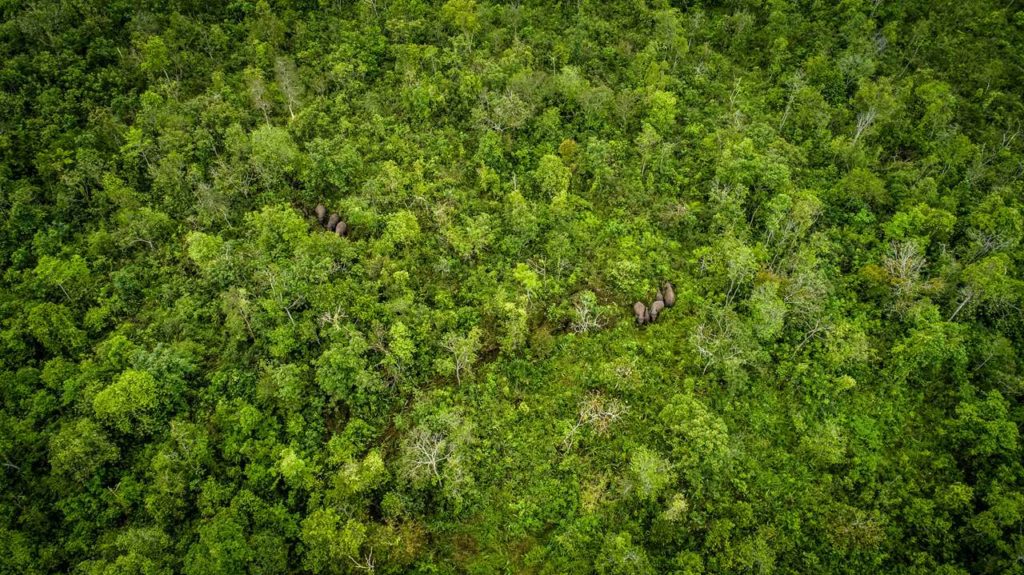
This lack of knowledge about such a major aspect of their behavior has long been a hurdle for effective conservation policies : basically it’s hard to tell how much space really need Sumatran elephants.
According to Alexander Mossbrucker from the Frankfurt Zoological Institute (which is directly involved in conservation policies in Jambi province) : an elephant population of 100 individuals would need 2000 km2 of habitat to roam.
A study conducted on one female elephant in Bengkulu province in 2007-2008 found that her home range was around 100km2. The female would cover between 1 and 2 kilometers per day (Sitompul).
How much Sumatran elephants remain in the wild ?
First population surveys of the Sumatran elephant go back to the 1980s (see Sitompul for reference). It was then estimated to be 2800-4800 individuals in 44 populations.
I haven’t checked thoroughly those early surveys but it is possible that they suffered from the same caveats as the early surveys on Sumatran rhino (extrapolation of field results on specific location to the whole island of Sumatra leading to gross overestimation of the population). A researcher indeed wrote in 2005 that “this estimate was in reality little more than an educated guess” (Hedges 2005).
A more recent island-wide surveyed was carried out in 2007 for the Ministry of Forestry. It estimated the population to be at 2400-2800 wild elephants (Soehartono & al 2007). The authors estimated that the population had declined by 35% since 1992.
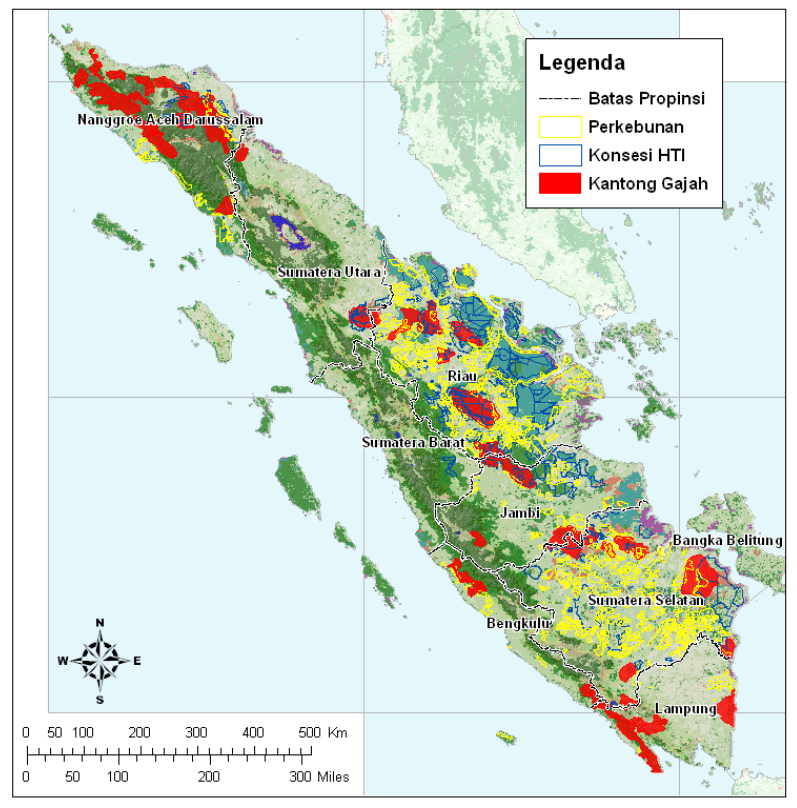
As you can see on the, the majority of the current habitat of the Sumatran elephant overlaps with agricultural land (perkebunan on the map) or industrial timber plantation (konsesi HTI on the map). Only a minority of the remaining Sumatran elephant habitat are protected forests.
The Sumatran Elephant has been reclassified as “Critically Endangered” (from “Endangered) in 2012 by the International Union for Conservation of Nature (IUCN).
In its recent publications, WWF refers to a workshop organized in 2014 in Bogor where a new estimation of the population would have been issued around 1724 individuals. But I was never able to find minutes of such a meeting.
Wildlife Conservation Society Indonesia also states “with total Sumatran Elephant around 2,400 – 2,800 individuals in 2007, that number most likely has been reduced to its half in current time” (WCS Indonesia).
Small unsurveyed population pockets might still be out there. In 2019, fieldwork in isolated part of Sembilang National Park identified a new small population (at least 6 individuals) (Hidayat & al 2019).
Reason behind elephant population decline in Sumatra
Habitat loss
The story is the same as for Sumatran rhinos or tigers : Sumatran elephant’s natural habitat is being reduced by direct forest conversion (to make way for agriculture) as well as forest fragmentation.
Agriculture expansion is not new in Sumatra. It’s a process that had started at the beginning of the 20th century when the Dutch colonial authorities developed the cultivation of coffee as well as oil drilling in North Sumatra.
Sumatra, and especially Riau province, is the heart of the Indonesian pulp & paper industry. It’s also a major palm oil producing island in the provinces of North Sumatra, Riau, South Sumatra and Lampung.
As the population grows, individual farmers also keep pushing the agricultural frontier. Recently logged forest are especially prone to such “independent” conversion.
For a more in-depth analysis of the deforestation issue in Indonesia, please read this article.
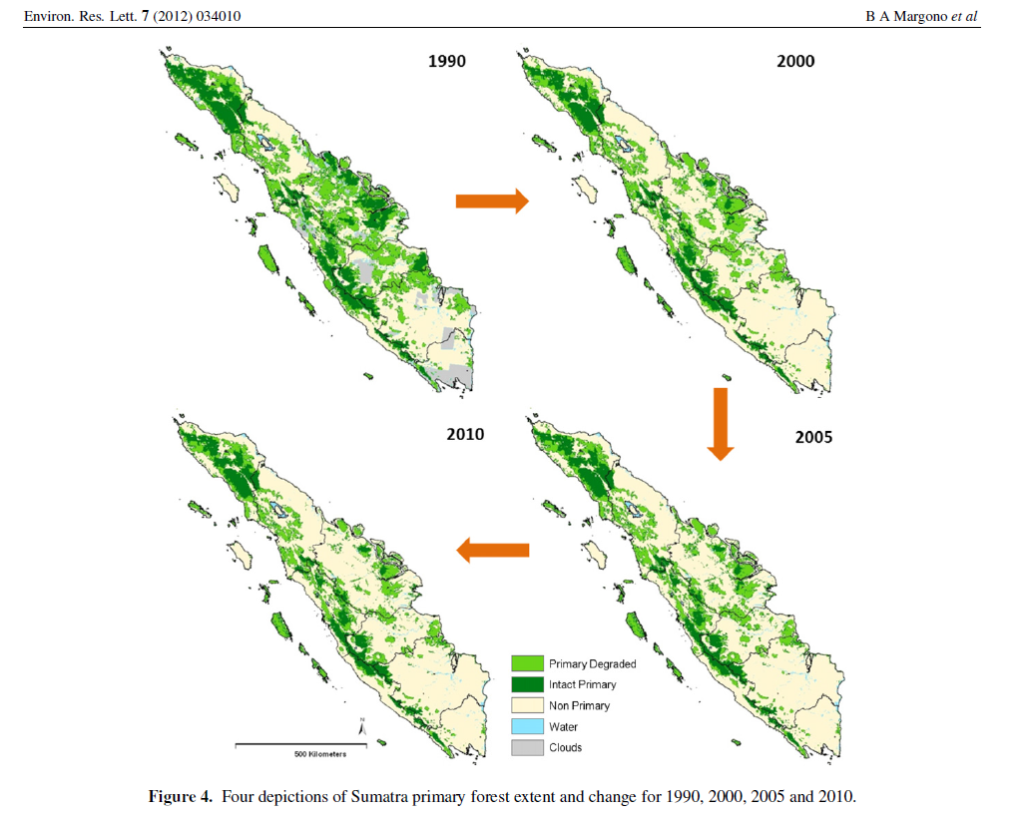
Human-Elephant conflicts
As forests shrunk, elephants are increasingly pushed outside of their original roaming land and end up in people’s villages and fields. In June 2019, a herd of 11 elephants was even seen near Pekanbaru, the capital of South Sumatra province (Detik).
Human-elephant conflict (HEC for specialists) have been constantly rising since 30 years. Elephants can raid crops but also be very destructive to human settlements.
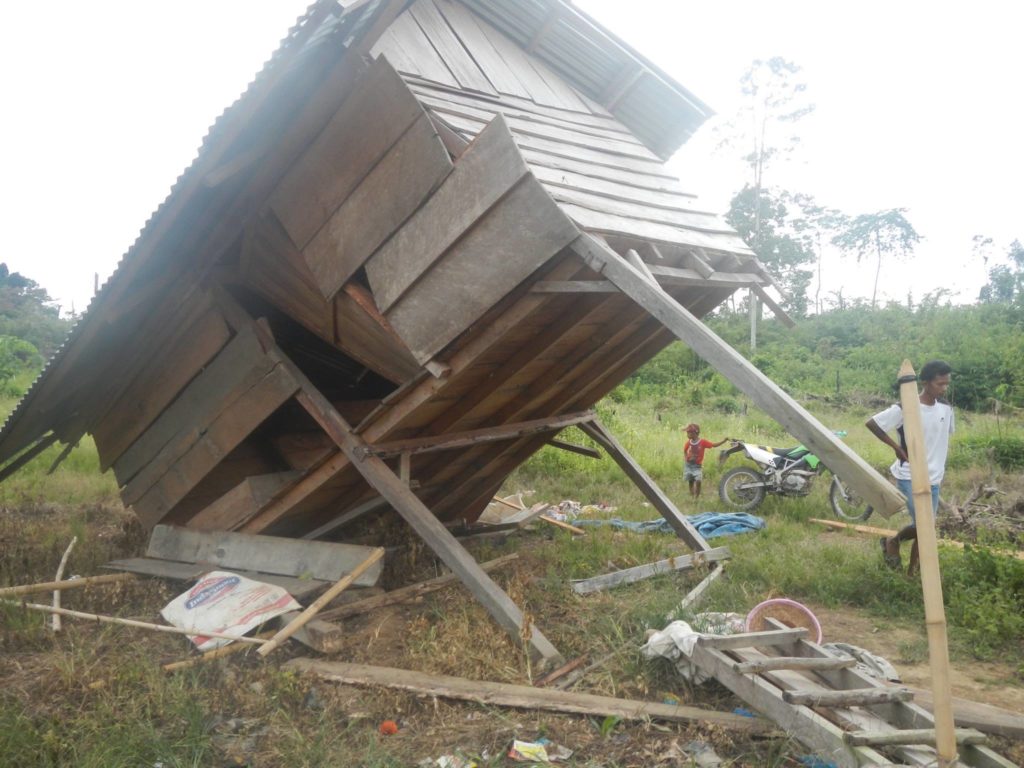
Elephant encounters are dangerous. For instance in November 2018, a man was stomped over by an elephant and left severely injured in Pidi regency, Aceh (CNN Indonesia).
From June 2000 to September 2002, researchers recorded 717 crop damage incidents, 24 damaged houses, 3 persons permanently injured and 3 persons killed due to elephants in Lampung province (Sitompul 2010).
For understandable reasons, many Sumatran farmers end up viewing elephants as pest. Poisoning is the most common way to get rid of them.
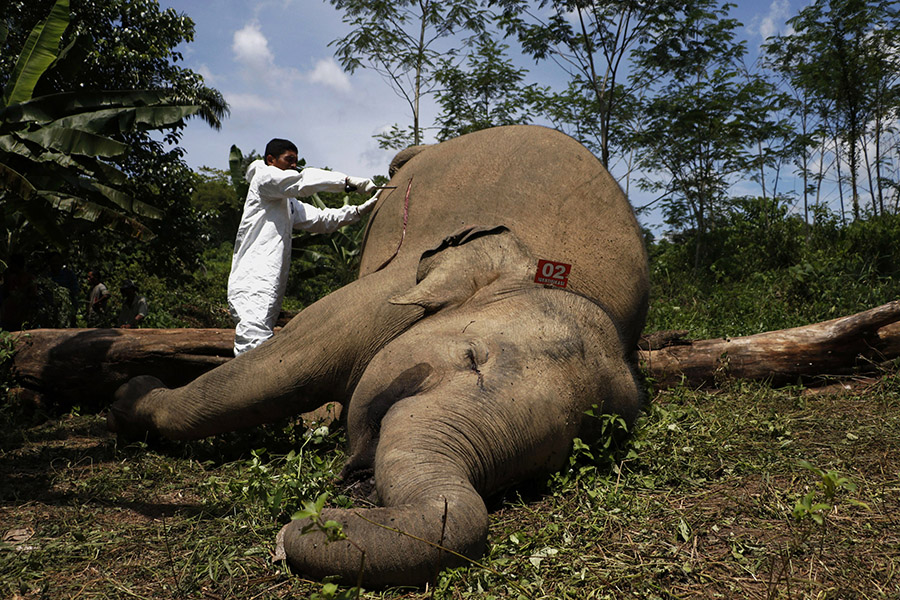
On top of that poaching of their tusks is still a lucrative activity. Few elephants are directly hunted for ivory, but it is common for villagers to tip poacher of the presence of a dead animal and to get rewarded for that (Mongabay).
Another calamities for elephants are snare laid out in the forest for other species. They are solid enough to severely injure a trapped leg, that leads to infection and sometime death (Mongabay).
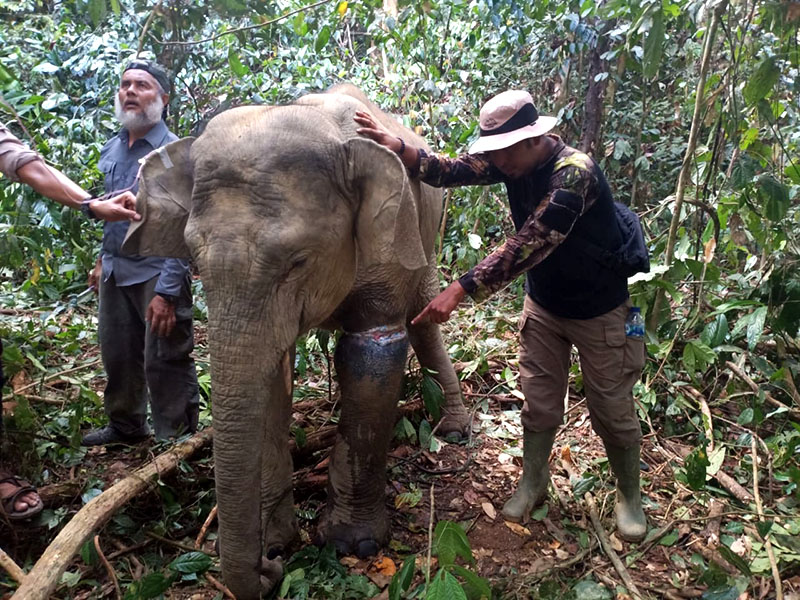
In a 2014 press release, WWF Indonesia estimated that at least 90 Sumatran elephants were killed in Aceh, Riau and Lampung in 3 years (source). Unfortunately, in 2020 this trend was not over (Mongabay).
Indonesia’s conservation policy
Earlier doctrine : capture and train
Since the early 1980s, the Indonesian government has sought to capture elephants involved in conflicts with humans and to relocate them to Elephant Training Centers (ETC) / Pusat Latihan Gajah (PLG). Now they are called Pusat Konservasi Gajah (PKG) : Elephant Conservation Centers (ECC).
You can find such facilities for instance in Riau (Mawas), Bengkulu (Seblat), South Sumatra (Padang Sugihan) or Lampung (Way Kambas).
By 1996, 570 elephants were captured and sent to such training centers (Lair 1997). Many of the captured elephant died during capture or soon after.
In 2007, there were around 300 tame elephants kept across these facilities (Soehartono 2007). According to the same source, there were 543 captive elephants in the world in 2007 (also including zoos and private facilities).
Such policy finds 2 main issues :
- Translocated elephants tend to return by themselves to their original habitat, causing other damages on the way (Mongabay).
- It gradually empties up existing habitat.
Mid 2000s : new strategy
In 2007, the government issued a 10 years strategy for the conservation of Sumatran and Kalimantan elephants (see Soehartono in sources). This plan included several targets including :
- Achieving full survey of existing elephants population by 2014
- Defining and granting legal protection to key conservation areas. Stopping elephant habitat conversion and restoring 100% of degraded elephant habitat by 2017.
By 2008, the Ministry of Forestry changed its regulation to encourage field rangers to first attempt to scare the elephants off human settlements (by using firecrackers for instance) before attempting to capture them. Another privileged method is to dispatch trained tame elephants and their mahout on site to lead wild herds away (Jakarta Post).
The main focus today is to secure pockets of elephants habitat and to mitigate human-elephants conflicts.
Regional BKSDA agencies, are increasingly equipping elephants of GPS collar to track their movement and dispatch a team whenever they approach human settlements (Jakarta Post).
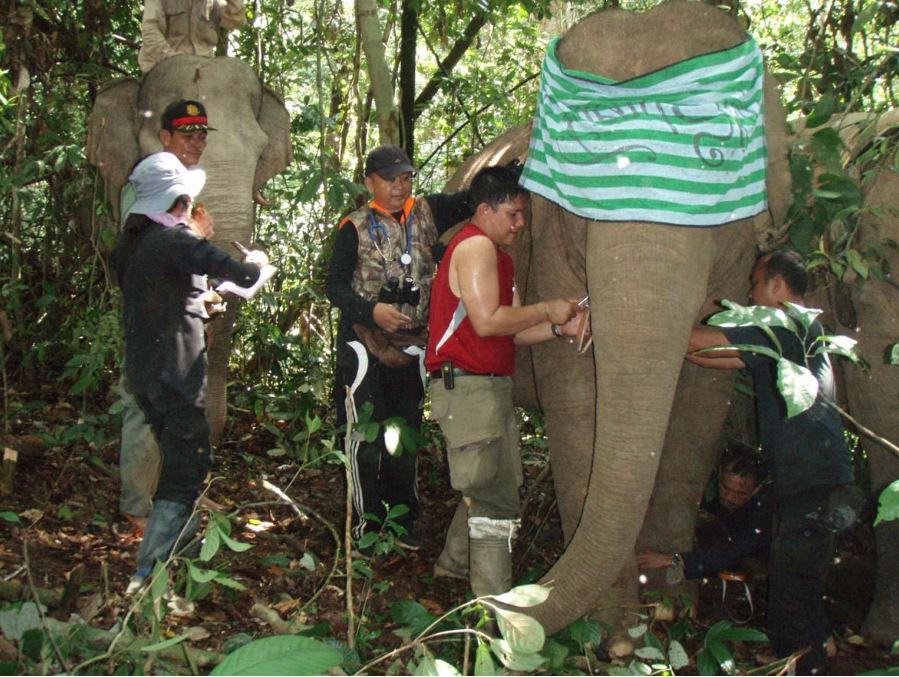
Besides Aceh, herds of wild elephants in Riau, Jambi and Lampung are more or less identified nowadays. With GPS technologies expansion as well as trained and funded conflict mitigation field team, elephants shall become more “manageable”.
Local newspapers commonly report local farmers calling upon environment officials to deal with wild elephants.
If the government is able to live up its commitments and preserve existing protected areas, including restoring degraded areas as well as building effective wildlife corridor. There is still hope for the Sumatran elephant.
Review of Sumatran elephant’s remaining habitats
Aceh
The province of Aceh is home to 2 major forest ecosystems of Sumatra : the Leuser ecosystem and the Ulun Macen ecosystem.
Aceh is the province of Sumatra with the largest amount of remaining forest. A commonly quoted reason for that is the separatist movement that violently clashed with the army for decades (roughly until the 2004 tsunami). Unrest prevented the development of large infrastructure projects and plantations until recently.
The environment ministry estimates the population of wild elephants to be around 500 in Aceh (Jakarta Post). Yet a large share of this population lives outside conservation area and regularly enter the inhabitants’ fields.
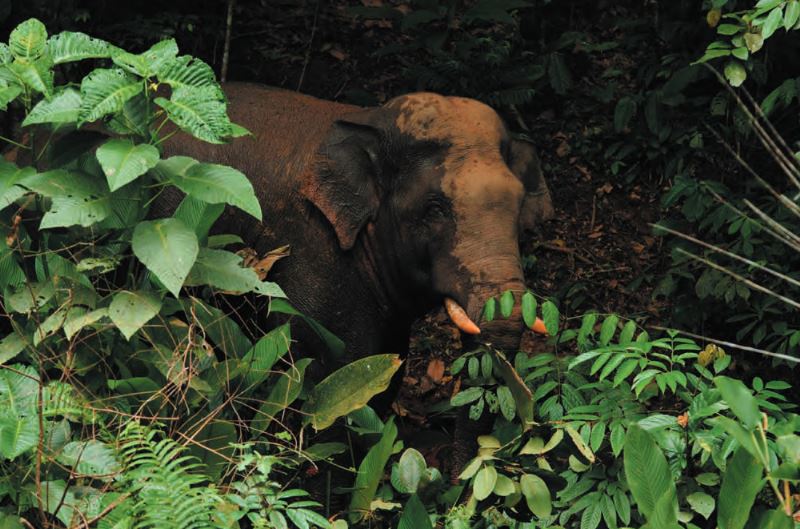
According to BKSDA Aceh head Sapto Aji Probowo, 11 wild elephants have been killed from 2017 to July 2018 in the province (Mongabay). 8 of them were killed in Aceh Timur regency that seems to be especially problematic.
In November, another elephant was found dead with his tusks removed in Serbajadi district (Aceh Timur). It was likely poisoned first (Jakarta Post).
Hopefully, some good news are also coming from Aceh. For instance in December 2018, a female elephant was rescued in Aceh Besar regency after it was sighted by villagers. It was equipped with a GPS-tracker collar and then released far from settlements (Jakarta Post).
According to BKSDA Aceh, 6 elephants in Aceh are equipped with such a device, 4 of which are still actives. It is possible to equip only the leader of one herd so this number might represent a higher number of tracked elephants.
In July 2019, the BKSDA Aceh also celebrated the birth of a female calf in Alue Kuyun Conversation Response Unit in West Aceh regency (Jakarta Post).
Lampung
Lampung is the southernmost province of Sumatra. Since the 1930s, colonial government and then the independent Indonesian state have encouraged migration from overpopulated Java to this province.
From a population of around 400’000 people in 1930 (Hedges 2005), the province is now home to more than 7’000’000 people, thereof 80% of ethnic Javanese and Sundanese (census 2010). This is the most densely populated province of Sumatra.
In 2002, Hedges & al conducted a large population survey of the Sumatran elephant in Lampung province. They found out that from the 12 distinct populations believed to exist in the 80s, only 3 of them subsisted and 2 of them were viable.
The good news is that both viable populations stays mostly within 2 national parks : Bukit Barisan Selatan (with a population estimated around 500) and Way Kambas (around 250). A recent survey (2010) indicates that the population of elephant within Way Kambas is stable or rising.
Both parks receive funds and help from NGOs to set up and train foot patrols and research facilities, notably from International Rhino Foundation (and its local partner Indonesia Rhino Foundation YABI) and the Wildlife Conservation Society.
Be ready for a collection of acronyms : Rhino Protection Unit (RPU), Tiger Protection Unit (TPU), Wildlife Protection Unit (WPU), SMART patrols … But the fact is that these national parks have the strongest anti-poaching efforts of all Sumatra (even though cases of poaching within the national parks are still reported).
Yet both parks (all Way Kambas as well as the central part of Bukit Barisan Selatan) are surrounded by small agricultural settlements and plantations. Illegal logging, forest fires and illegal farmers encroachments are an issue : not 100% of both national park territory is forested !
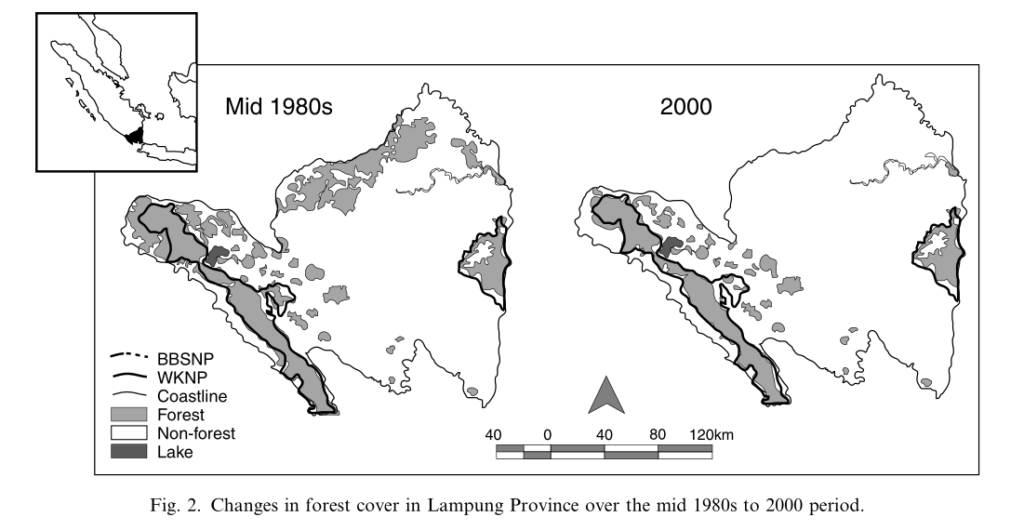
Due to the fact that elephants don’t limit their roaming to the strict boundaries of the parks, combined with the rather high human density around them ; human-elephant conflicts are rife in this region.
However, the conservation results in Lampung province shows that strict protection of conservation area, strong anti-poaching efforts and efforts to mitigate human-elephant conflict are effective to sustain large elephant populations even in a very populated region.
Bukit Barisan Selatan National Park
Bukit Barisan Selatan is an historical Indonesian national park, located on Lampung west coast. It’s officially 374’000 ha large (the 3rd largest national park of Sumatra after Kerinci Seblat and Mount Leuser). The park protects the very end of the Bukit Barisan mountain range that crosses Sumatra from north to south.
Today most of the remaining primary forest within the park is mountain forest growing on steep terrain.
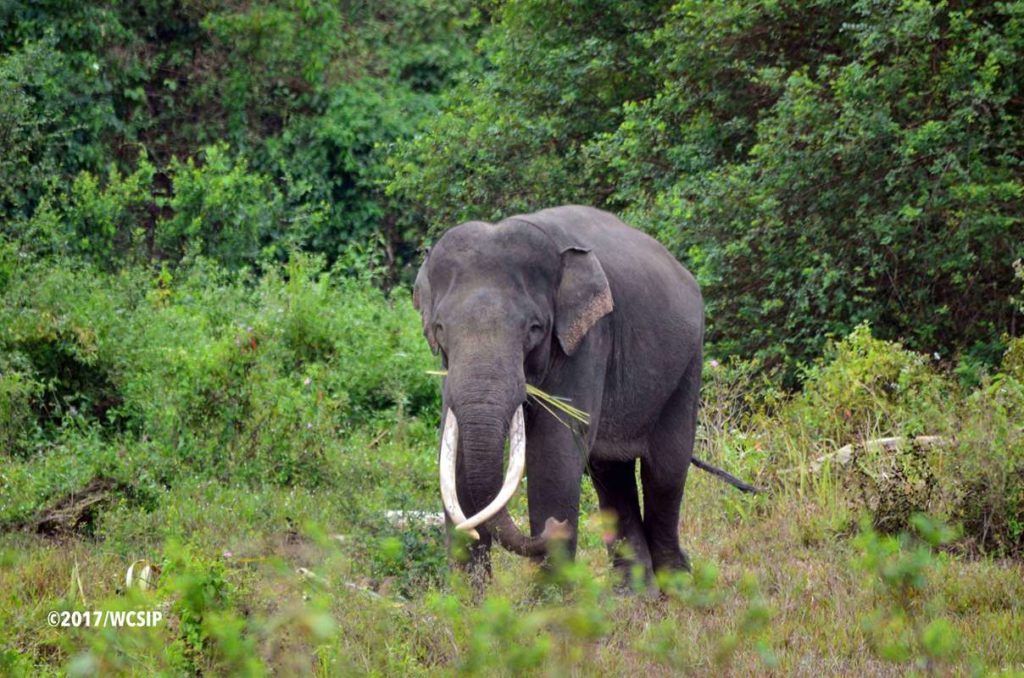
Highest density of elephant is believed to be found in the southern tip of the park (a peninsula surrounded by the Indian ocean), where human presence is also very low.
While Bukit Barisan Selatan is believed to host the largest wild population of Sumatran elephant (Soehartono 2007), recent DNA analysis have raised the alarm on the low level of genetic diversity among the elephants (Nur & al 2019, source). The authors advocated translocation of individuals and the development of forest corridor to prevent inbreeding.
Way Kambas National Park
Way Kambas is a rather small national park (c.126’000 ha) facing the Java sea on the eastern shore of Sumatra. It’s mostly made of lowland forests and swamp. It is very prominent in the global Sumatran rhino conservation strategy.
- Way Kambas Sumatran Rhino Sanctuary (SRS) is the only but successful captive breeding facility of the world.
- The National Park still have a small but breeding wild population of Sumatran rhino.
- A functioning network of camera trap is also operating.
A major issue in Way Kambas is illegal logging as well as human-elephant conflicts. Farmers do cultivate within 1km from the park boundaries.
The last population survey was conducted by WCS in 2010 (source). Based on dung sample analysis, it was estimated that 247 Sumatran elephants (220-278) were living in the park, among them 22% of juvenile elephants.
This is a very encouraging news, because it suggests that the population had remained stable or maybe even increased since the last population survey in 2002 (Hedges 2005).
South Sumatra
Padang Sugihan Sebokor Wildlife Sanctuary (Suaka Margaswasta) is a peatland area connecting different fragment of forests across Ogan Ilir and Banyuasin regencies in South Sumatra province. It’s about 87’000 ha.
Besides the Wildlife Sanctuary, there is also an Elephant Training Center.
The local population is estimated to be around 90 individuals (Mahanani 2012).
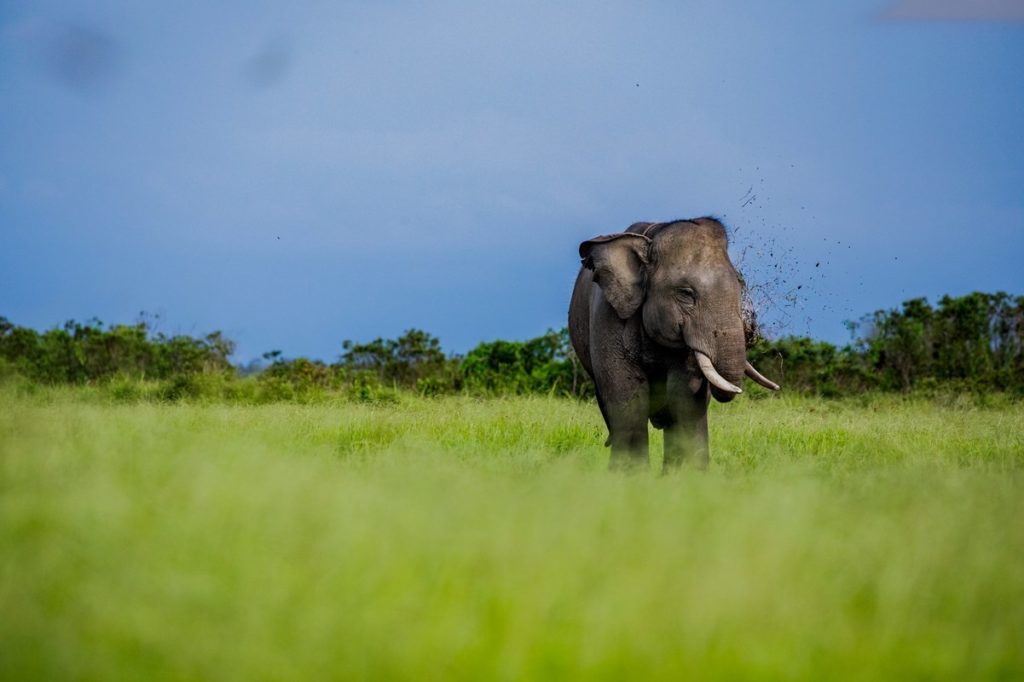
The current population of the sanctuary is mostly the result of human efforts touted ‘Ganesha’ elephant drive in 1982.
Jambi
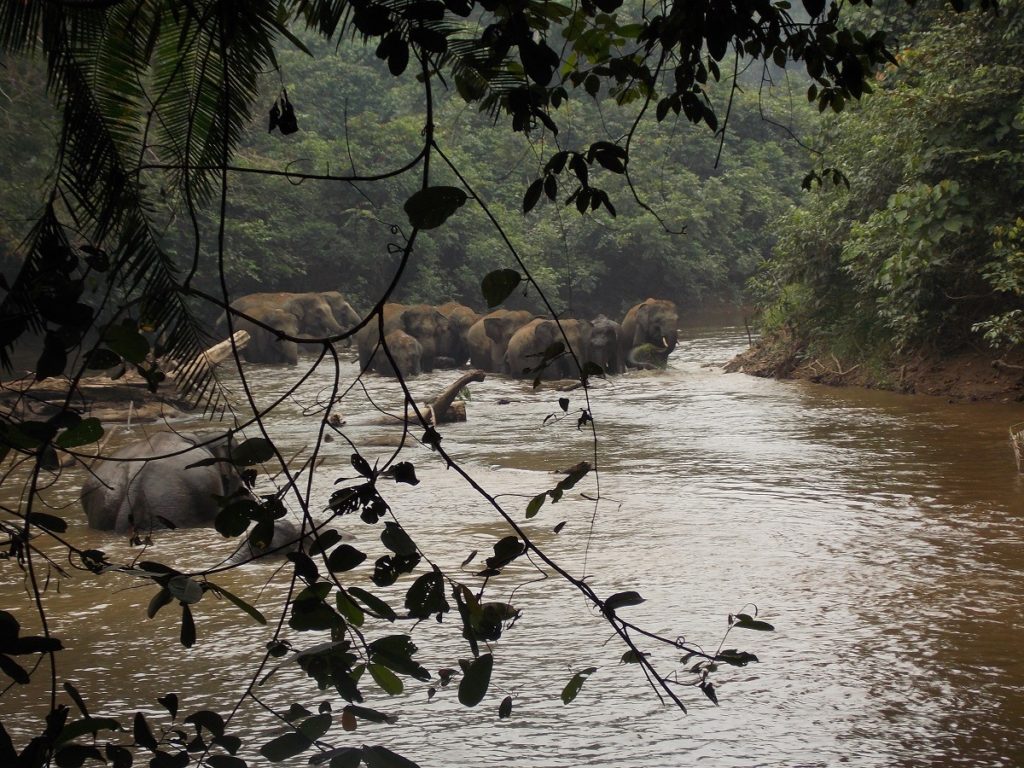
The BKSDA Jambi is working together with the International Elephant Project.The official figures are 8 herds of 143 elephants roaming national park’s corridor (Jakarta Post). This is consistent with a 2008 population survey of the Frankfurt Zoological Zoo estimating the population around 150 inviduals in Jambi.
- 8 herds (total 143 elephants) in Bukit Tigapuluh National Park corridor.
- 2 herds (total 7 elephants) in Sarolangun regency.
- 1 herds (total 38 elephants) in Kerinci regency.
Most of the elephants are concentrated around Bukit Tigapuluh National Park. The national park is officially around 145’000 ha large, but according to an expert from Frankfurt Zoological Institute, less than 50’000 ha remain viable for elephants (Mongabay).
In December 2018, BKSDA Jambi announced its plan to build a 54’000ha wildlife corridor in the Bukit Tigapuluh Ecosystem (it is not clear if those 54’000 ha adds to the existing national park boundaries). This corridor will be formed based on various private forest concessions articulated with the national park.
In addition to connecting existing remaining pockets of forest, BKSDA Jambi actively captures and relocate elephants to prevent inbreeding within existing herds and develop new viable ones.
For instance, in September 2018, 3 elephants were relocated from Bukit Tiagpuluh NP in Tebo regency to PT Restorasi Ekosistem (REKI) in Sarolangun regency (Jakarta Post).
Relocation efforts from Bukit Tigapuluh NP also target Harapan forest. A herd of 6 females remain there (Mongabay). A male called Harris has been brought from Bukit Tigapuluh in 2016 to allow natural breeding. So the herd is now 7 individuals.
More relocation from Bukit Tigapuluh are scheduled : 2 males and a female have been identified and fit with GPS tracker in Bukit Tigapuluh with plan to bring them to Harapan. Yet this a highy difficult task. During the last attempt, only a male (Lucky Dudung) was captured and brought to Harapan but so far he has not yet joined the herd as desired (Mongabay).
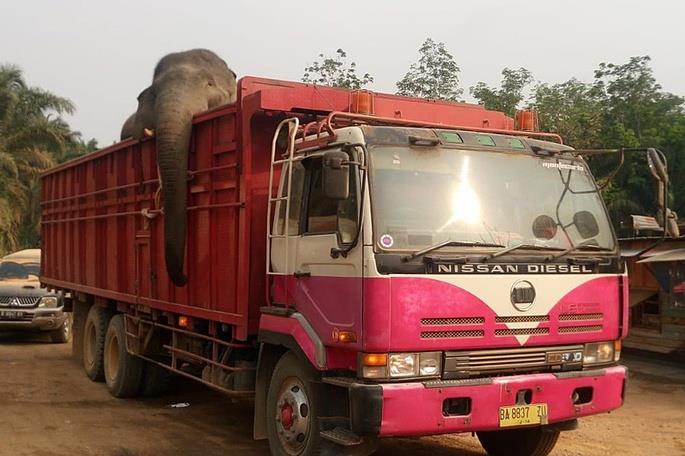
According to the head of the BKSDA Jambi, Rahmad Saleh, “elephant poaching is a major threat to the species in Bukit Tigapuluh National Park corridor” (2018 interview to the Jakarta Post).
Bengkulu
The Seblat Elephant Conservation Center (SECC) is an area of around 7000ha of regenerating logged forest from the late 1980s. About 23% is forested and it is surrounded by large palm-oil plantations, small-scales agriculture and human settlements.
It houses 23 tame elephants captured by the government in the context of its human-elephant conflict mitigation program. 40-60 additional wild elephants are believed to roam this area. Much of conflicts with the neighbouring land.
Series – Conservation Status
Sources
- Australian NGO The International Elephant Project that funds and supports conservation project especially in Bukit Tigapuluh area (website).
- Indonesia NGO Forum Konservasi Gajah Indonesia (Indonesian Elephant Conservation Forum) (website).
- Indonesian NGO Forum Konservasi Leuser (Leuser Conservation Forum) (Facebook page).
- S.Hedges & al. 2004. Distribution, status and conservation needs of Asian elephants (Elephas maximus) in Lampung Province, Sumatra, Indonesia. Biological Conservation 124 (2005) 35-48.
- T. Soehartono & al. 2007. Strategi dan rencana aksi konservasi gajah Sumatera dans Gajah Kalimantan 2007-2017. Departemen Kehutanan (link).
- A.F. Sitompul, “Ecology and Conservation of Sumatran Elephants (Elephas maximus sumatranus) in Sumatra, Indonesia” (2011), Open Access Dissertation, University of Massachusetts Amherst (link).
- A.F. Sitompul & al. 2010. Crop Raiding by Elephants Adjacent to Two National Parks in Lampung Province, Sumatra, Indonesia. Gajah 33 (2010) 26-34 (link).
- Levang & al. 2012. Landless farmers, sly opportunists, and manipulated voters : the squatters of the Bukit Barisan Selatan National Park (Indonesia). Conservation and Society, 2012, 10 (3), p. 243-255.
- A.I. Mahanani, “Strategi Konservasi Gajah Sumatera (Elephas maximus sumatranus Temminck) di suaka margasatwa Padang Sugihan provinsi Sumatera Selatan, Berdasarkan Daya Dukung Habitat” (2012), Tesis S2, Universitas Dipoegoro Semarang (link).
- B.Hidayat & al. 2019. Recent observations of Elephas maximus sumatranus in Sembilang National Park, South Sumatra. Biovalentia: Biological Research Journal, Vol. 5 No. 1, May 2019.
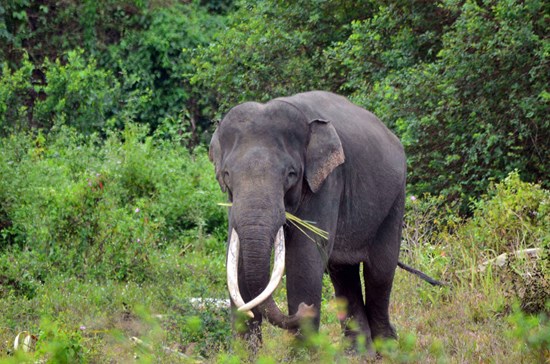
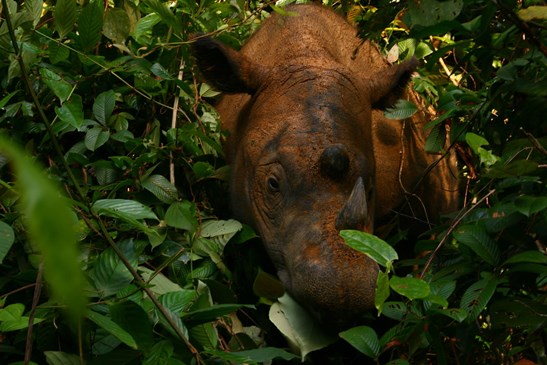
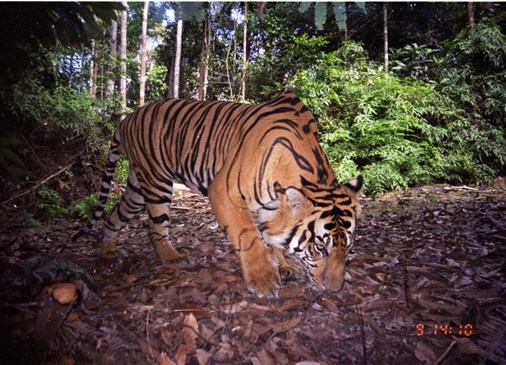
Leave a Reply